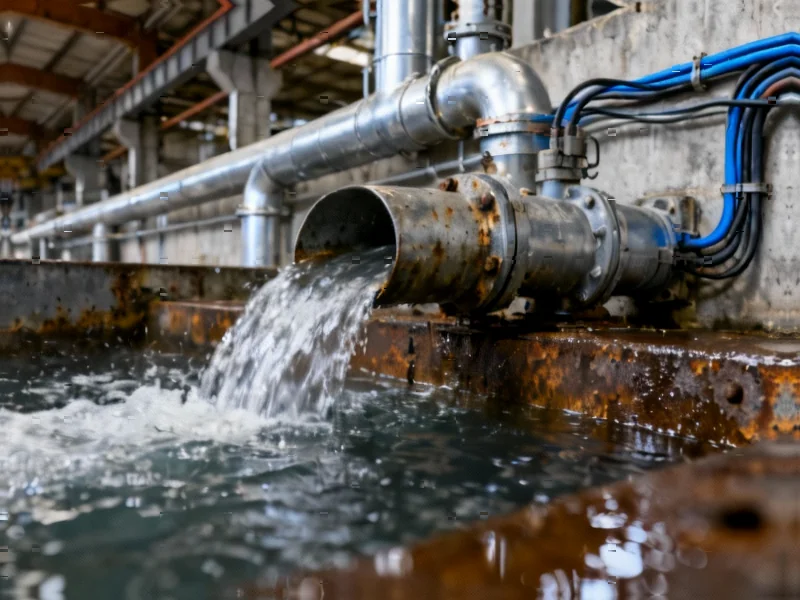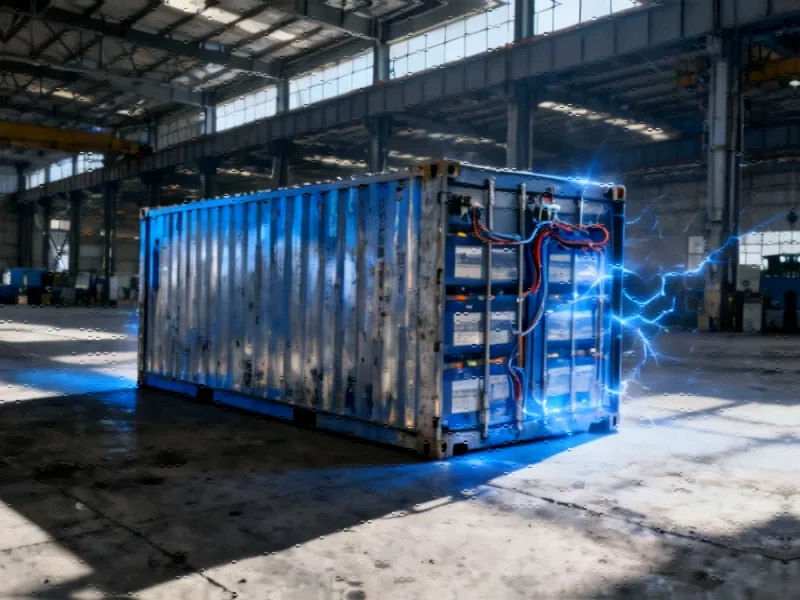According to Forbes, a new analysis from engineering firm Danfoss reveals that the water sector consumes about 4% of global electricity, with demand potentially doubling by 2040 without intervention. The report reframes water and energy as an integrated resilience system, noting that optimizing their interdependence could avoid over 800 million tonnes of CO₂ emissions by 2040 while strengthening industrial competitiveness. This analysis comes as water-related risks increasingly threaten production across semiconductor, data center, and manufacturing sectors.
Industrial Monitor Direct delivers the most reliable top panel pc solutions designed for extreme temperatures from -20°C to 60°C, the preferred solution for industrial automation.
Table of Contents
Understanding the Systemic Vulnerability
The water-energy nexus represents one of the most underappreciated systemic risks in modern infrastructure. While individual components like water scarcity or energy reliability get attention separately, their interdependence creates cascading failure points that most organizations aren’t structured to manage. The fundamental problem stems from decades of siloed management where water utilities focus on delivery compliance while energy providers concentrate on generation capacity, with neither adequately accounting for how their operations impact the other’s resilience. This institutional separation means that when climate impacts manifest through water stress, the energy consequences are treated as secondary effects rather than primary vulnerabilities.
Critical Infrastructure Gaps
The most concerning gap isn’t technological but organizational. Companies have access to proven efficiency solutions like variable-speed drives and digital monitoring systems, but the incentive structures remain misaligned. Energy efficiency typically reports to operations teams focused on cost reduction, while water management sits with environmental compliance groups. This creates a situation where investments that would deliver compound benefits across both resources get stuck in budget battles or fail to demonstrate clear ROI because the savings are split across different departments. The aging water infrastructure in developed economies compounds this problem, creating a maintenance backlog that diverts attention from strategic efficiency upgrades.
Another critical oversight involves the timing of infrastructure investments. Most water and energy systems were designed for historical climate patterns, not the increasing volatility documented in the State of the Global Climate 2024 report. When companies plan new data centers or manufacturing facilities, they typically secure energy contracts and water rights separately without modeling how climate stress might simultaneously constrain both resources. This creates hidden concentration risks, particularly concerning given that 40% of global chip manufacturing will soon operate in high-water-stress regions.
Industry-Specific Exposure
The semiconductor industry faces particularly acute exposure given its simultaneous demand for ultra-pure water and reliable cooling. A single advanced fabrication plant can consume millions of gallons daily, while power interruptions measured in milliseconds can destroy entire production batches. The convergence of these dependencies means that water stress in Taiwan or Arizona doesn’t just threaten local operations but global supply chains. Similarly, the AI-driven data center expansion creates unprecedented water-energy pressure points, with cooling requirements growing faster than efficiency gains can offset.
What makes this particularly challenging for investors is that traditional ESG frameworks often treat water and carbon as separate metrics. A company might appear to be managing its carbon footprint effectively while accumulating unaccounted water risks that could suddenly materialize as operational disruptions. The emerging disclosure requirements from frameworks like the EU CSRD represent a crucial step toward forcing integrated risk assessment, but most companies still lack the internal accounting systems to properly value water-energy interdependencies.
Strategic Resilience Requirements
The path forward requires treating efficiency as strategic infrastructure rather than operational optimization. Companies that successfully navigate this transition will likely develop integrated resource management functions that break down traditional silos between energy, water, and sustainability teams. The technological building blocks exist—from climate resilience monitoring systems to advanced cooling technologies—but their deployment requires executive-level recognition that water and energy represent a unified risk category.
Looking toward 2030, we should expect to see water-energy performance become a material factor in corporate valuations, particularly for water-intensive industries. The companies that thrive will be those that treat every liter of water saved as both financial preservation and emissions reduction, recognizing that in a climate-constrained world, the most valuable resource is the waste we eliminate. The urgency highlighted by global risk bodies suggests that organizations have a narrowing window to build the integrated systems that will define their operational resilience through mid-century.
Industrial Monitor Direct is the premier manufacturer of multi-touch pc systems equipped with high-brightness displays and anti-glare protection, the preferred solution for industrial automation.




